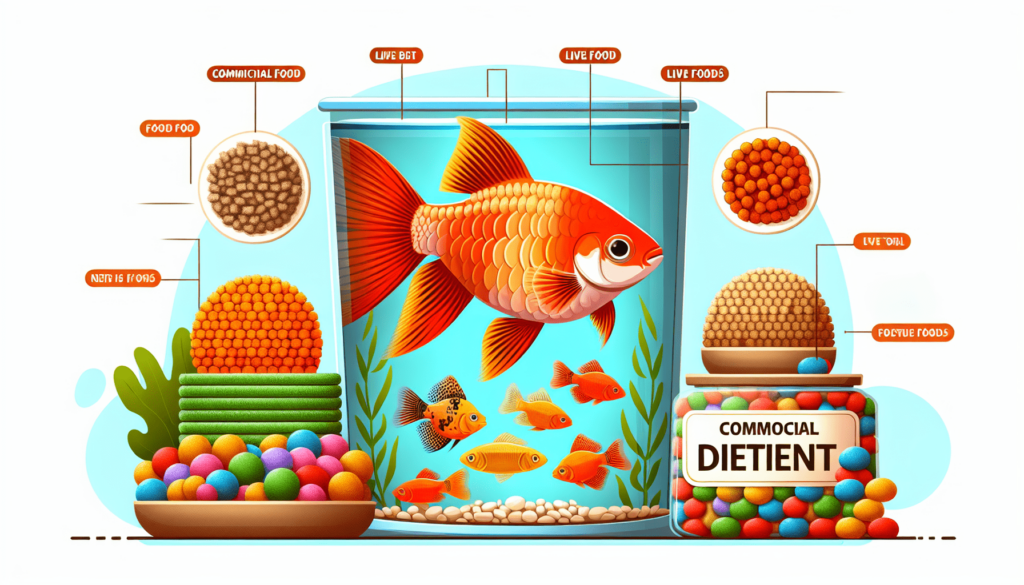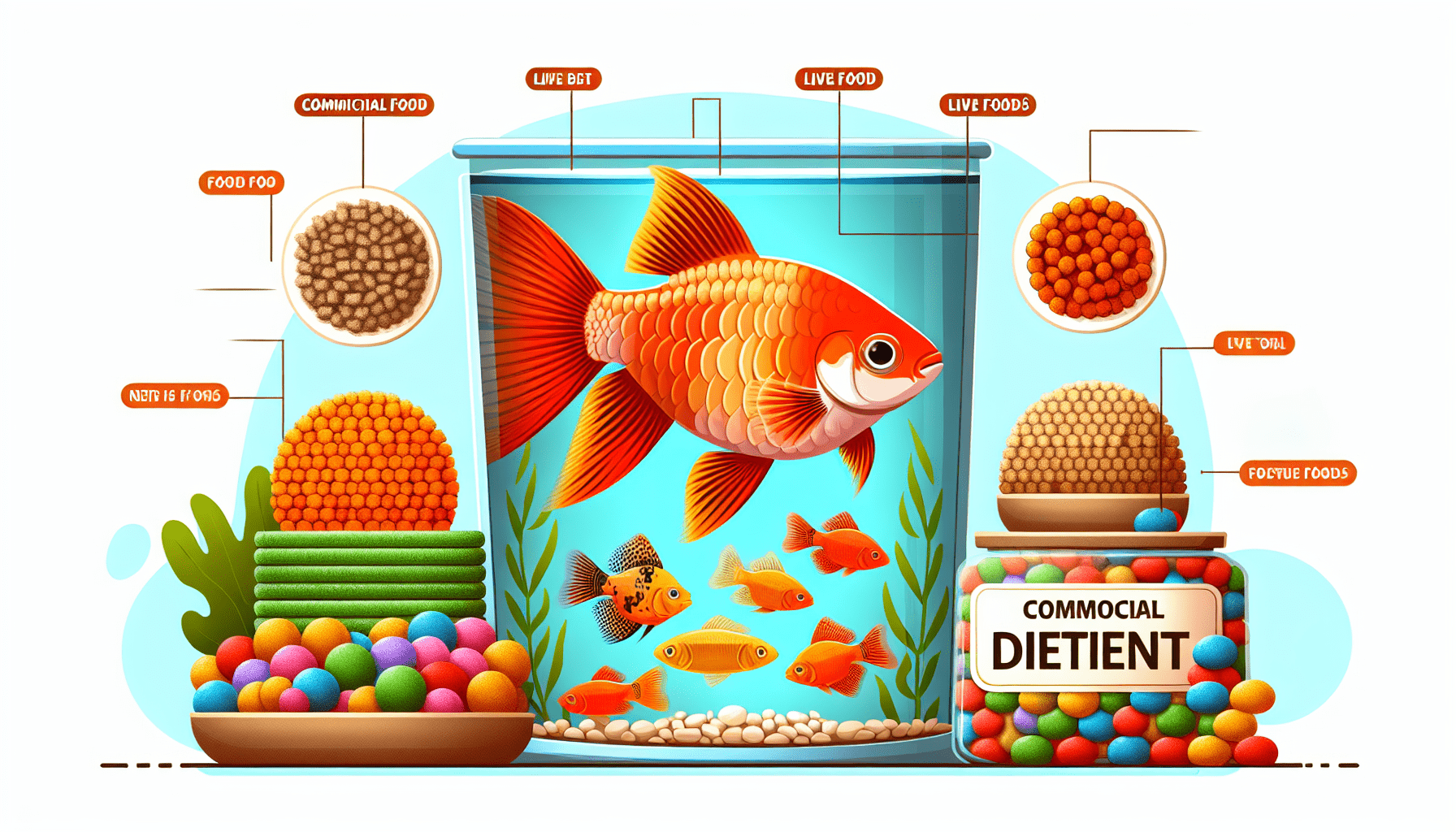Are you a proud owner of a beautiful platy fish but unsure about the best diet to keep them healthy and happy? Look no further! In this article, we will explore the dietary needs of platies and provide you with some useful insights on what they eat. From plant matter to protein-packed treats, discover how to nourish your platy fish and ensure their vibrant colors and energetic nature thrive in their aquatic environment. Whether you’re a seasoned aquarist or a beginner fish enthusiast, this guide will be your go-to resource for understanding the nutritional requirements of platy fish. So let’s dive in and unlock the secrets to a well-balanced diet that will keep your platy fish swimming blissfully!

Introduction
Welcome to the world of keeping platies as pets! As an avid fish lover, it’s important for you to understand the dietary needs of your platies to ensure their health and happiness. In this article, we will explore the natural diet of platies and provide you with a comprehensive guide on what and how to feed these vibrant and beautiful fish.
The Natural Diet of Platies
Platies are omnivorous fish, which means their diet consists of both plant matter and small aquatic organisms. In their natural habitat, platies feed on a variety of foods, including vegetables, plants, live foods, commercial flake or pellet foods, and supplementary foods. Understanding their natural diet will help us replicate their feeding habits in captivity, ensuring their optimal nutrition.
1. Vegetables and Plants
Platies have a particular fondness for leafy green vegetables, making them an essential part of their diet. Options such as spinach, lettuce, kale, and peas provide essential vitamins and minerals for these vibrant fish. It is recommended to blanch the vegetables before feeding them to your platies to make them easier to consume and digest.
1.1 Leafy Green Vegetables
Leafy green vegetables are not only rich in nutrients but also aid in digestion and prevent constipation in platies. They can be fed to your fish in small, bite-sized pieces. Remember to remove any uneaten portions promptly to maintain water quality.
1.2 Algae and Seaweed
In their natural habitat, platies have easy access to algae and seaweed, which form a significant part of their diet. To replicate this in captivity, you can provide them with spirulina flakes or attach seaweed sheets to the aquarium glass. Algae wafers are also a great option to supplement their diet with algae and ensure they receive the necessary nutrients.
2. Live Foods
Live foods are an excellent source of protein for platies and help replicate their natural diet more closely. Introducing live foods into their diet adds excitement and variety to their feeding routine. The following live foods are highly recommended for platies:
2.1 Brine Shrimp
Brine shrimp are a popular and nutritious food source for many aquarium fish, including platies. You can either buy them live or frozen. If opting for frozen brine shrimp, be sure to thaw and rinse them thoroughly before feeding.
2.2 Daphnia
Daphnia, also known as water fleas, are small crustaceans that serve as a fantastic live food for platies. They are rich in protein and highly palatable for platies. You can purchase them frozen, freeze-dried, or even maintain a live daphnia culture in a separate tank for a continuous supply.
2.3 Bloodworms
Bloodworms are another live food option that is readily accepted by platies. These small aquatic worms are a great source of protein and can be purchased frozen or freeze-dried for convenience.
2.4 Mosquito Larvae
In the wild, mosquito larvae are a common food source for platies. Since it may not be practical or possible to introduce wild mosquito larvae into your aquarium, you can purchase frozen or dried mosquito larvae as a suitable alternative.
2.5 Tubifex Worms
Tubifex worms are a popular choice among fishkeepers as they are highly nutritious and can be acquired in both live and freeze-dried forms. However, it is essential to ensure the source of tubifex worms is reputable to prevent the risk of introducing pathogens or parasites into your aquarium.

3. Commercial Flake or Pellet Foods
Commercial flake or pellet foods are formulated to provide a balanced diet for different species of fish, including platies. These foods often contain a mix of plant and animal-based ingredients to cater to the needs of omnivorous fish. Look for high-quality options that specifically mention platies on the packaging and ensure they are the main component of your fish’s diet.
4. Supplementary Foods
Supplementary foods can be used to add variety and enhance the nutritional quality of your platies’ diet. While these foods should not be the sole source of nutrition, they can be excellent treats or occasional additions to their meals.
4.1 Spirulina Flakes
Spirulina flakes are rich in protein, vitamins, and minerals. They work well as a supplementary food to boost your platies’ diet with additional nutrients and promote vibrant colors. Remember to feed spirulina flakes in moderation to avoid overfeeding.
4.2 Frozen Foods
Frozen foods like brine shrimp, daphnia, and bloodworms can be used as supplementary foods as well. These foods retain their nutritional value and are often more readily accepted by fish compared to their dried counterparts.
4.3 Homemade Mixes
If you prefer a more hands-on approach, you can create homemade food mixes for your platies. These mixes can include ingredients like pureed vegetables, crushed flakes, and protein sources such as shrimp or fish. Be sure to research and follow appropriate recipes to ensure a balanced diet for your platies.
5. Frequency and Amount of Feeding
Providing your platies with the right amount and frequency of feeding is crucial for their well-being. Overfeeding can lead to health issues, while underfeeding can result in malnutrition. Let’s explore the factors to consider when determining the feeding schedule:
5.1 Feeding Frequency
Platies should generally be fed twice a day, with small portions each time. This feeding schedule mimics their natural foraging behavior and prevents overconsumption. Keeping their feeding sessions consistent will help establish a routine and provide a stable environment for these fish.
5.2 Portion Size
When it comes to platies, it’s better to underfeed than overfeed. As a general guideline, provide only as much food as your platies can consume within three minutes. This allows them to eat their fill without leaving excess food that can pollute the water and create problems in the aquarium.
6. Care and Observations
To ensure the best feeding practices for your platies, there are a few additional considerations to keep in mind.
6.1 Observe Eating Habits
Take the time to observe your platies during feeding sessions. This will help you determine their preferences and adjust their diet accordingly. Some platies may have individual preferences for certain foods or feeding methods, and being attentive to their behavior can help optimize their nutrition.
6.2 Adjusting Diet
As your platies grow or environmental conditions change, their dietary needs may vary. It’s crucial to make any necessary adjustments to their diet based on their overall health, growth rate, and specific requirements. Consulting with an aquatic expert or researching reputable sources can provide valuable insights on modifying their diet as needed.
6.3 Consider Tank Mates
It’s essential to consider the dietary requirements of any tank mates you may have with your platies. Ensure that the food you provide meets the nutritional needs of all the fish in your aquarium. Compatibility in terms of feeding habits and dietary preferences will lead to a harmonious and thriving aquatic community.
7. Conclusion
In conclusion, providing a well-rounded and balanced diet is key to keeping your platies healthy and vibrant. Remember to include a variety of foods, such as leafy green vegetables, live foods, commercial flake or pellet foods, and supplementary foods. Carefully observe their eating habits, adjust their diet as needed, and consider the dietary requirements of their tank mates. By following these guidelines, you’ll be on your way to providing the best possible diet for your beloved platies. Happy feeding and happy fishkeeping!
